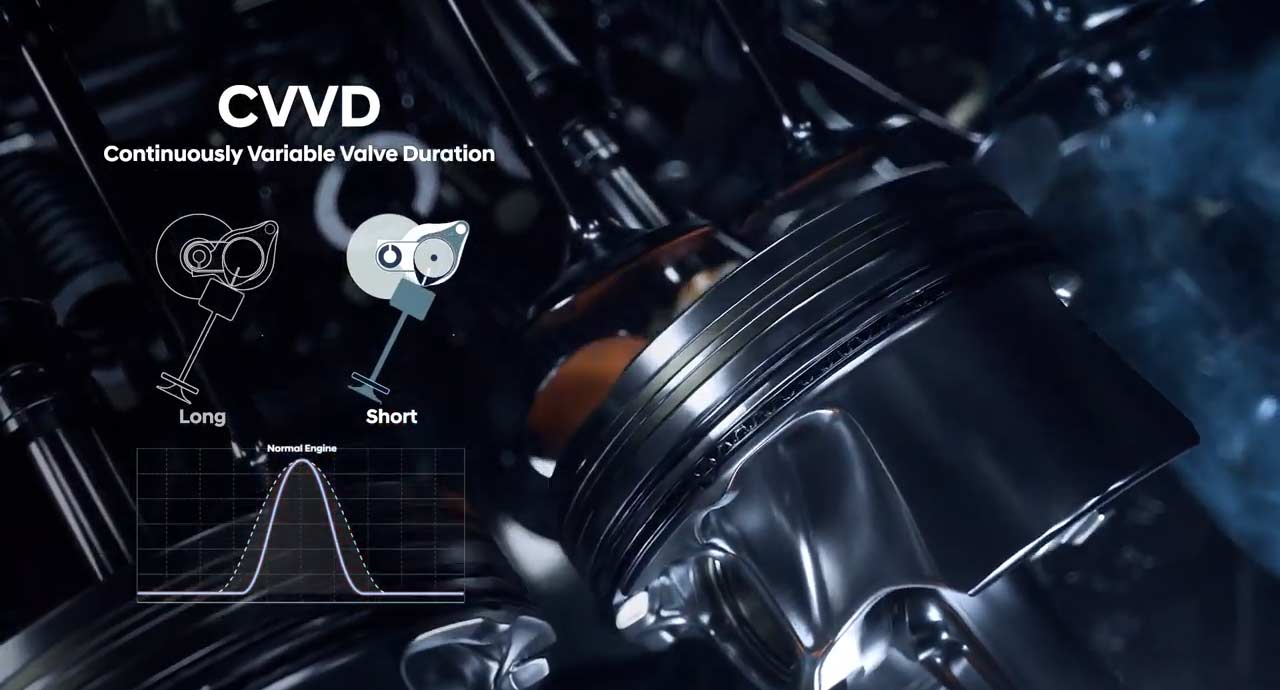While unbelievable amount of investments are being made in electric mobility as if the world is going to run out of oil any minute, some carmakers are still trying to improve the Internal Combustion Engine and make it a bit more efficient. We saw the AMG M139 engine recently, which makes 400+ hp out of a 2.0L 4-cylinder unit.
This time, Hyundai has come up with Continuously Variable Valve Duration (CVVD) technology, claimed to be the world’s first. The valve control technology regulates the duration of valve opening and closing according to driving conditions, achieving a 4% boost in performance and a 5% improvement in fuel efficiency. The technology is also claimed to cut emissions by 12%.

Typical variable valve control technologies manage the timing of the valve’s opening and closing (as in Continuously Variable Valve Timing – CVVT) or control the volume of air admitted by adjusting the depth of the opening (Continuously Variable Valve Lift – CVVL). Previous variable valve control technologies could not regulate valve duration, as the valve’s closing timing was subordinate to opening timing and could not respond to various driving situations. CVVD takes the technology in a new direction by adjusting how long a valve is open, the company said.
When the vehicle is maintaining a constant speed and requires low engine output, CVVD leaves the intake valve open until the middle of the compression stroke and starts to close it at the end. This helps to improve fuel efficiency by reducing the resistance caused by compression. When the driver asks for more (such as high-speed driving), the intake valve is closed at the beginning of the compression stroke to maximize the amount of air used for the explosion, enhancing torque to improve acceleration.
New Smartstream G1.6 T-GDi engine
This new technology will be applied to the new Smartstream 1.6-litre 4-cylinder turbocharged gasoline engine with 180 hp and 27.0 kgm (265 Nm) of torque. The engine also features Low-Pressure Exhaust Gas Recirculation (LP EGR) to further optimize fuel efficiency. The system returns some of the gas burnt by the engine to the combustion chamber, producing a cooling effect and reducing NOx (nitrogen oxides) emissions.
The G1.6 T-GDi also features a low-pressure system that redirects the burnt emission gas to the front of the turbocharger compressor, rather than the intake system, to increase efficiency under high load conditions.
The new unit has an Integrated Thermal Management System that quickly heats or cools the engine to an optimal temperature, and a strong direct spray system that achieves 350 bar, surpassing the 250 bar of the previous T-GDi engine. In addition, the engine friction is reduced by 34% with the application of low friction moving parts, the company said.
 File Photo
File Photo
The new Smartstream G1.6 T-GDi engine will be applied in the new Sonata Turbo, which is set for introduction in the second half of this year. This premiere will mark the first in a series of new Hyundai and Kia vehicles featuring the new engine.

Leave a Reply
Note: Comments that are unrelated to the post above get automatically filtered into the trash bin.


































